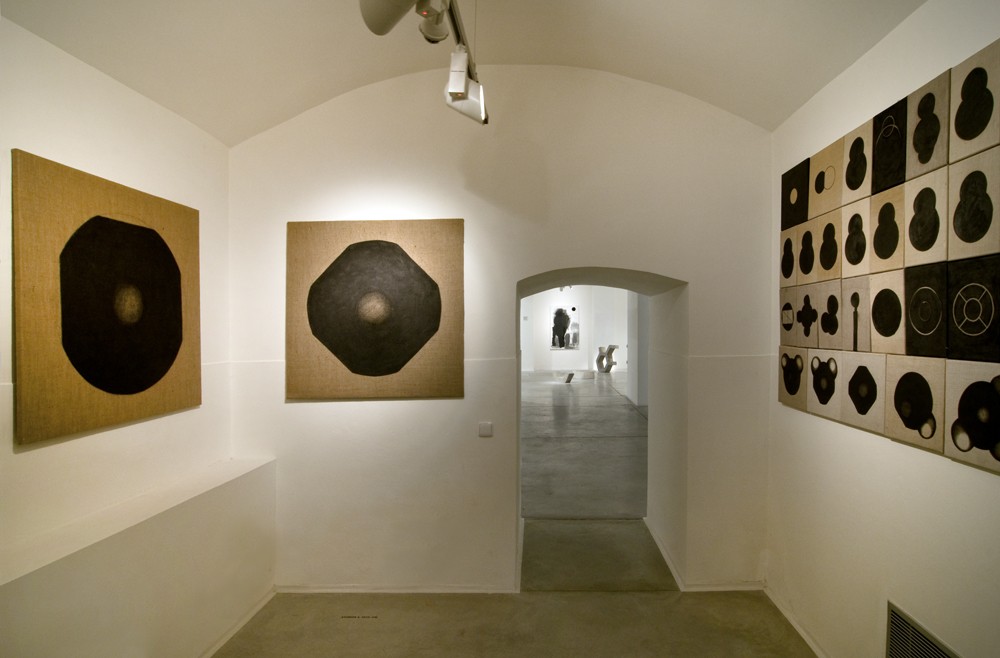Atomos
2010
With beauty before me, I walk.
With beauty behind me, I walk.
With beauty above me, I walk.
With beauty all around me, I walk.
It is finished in beauty.
It is finished in beauty.
It is finished in beauty.
It is finished in beauty.
— from a Navajo ceremony
Tomáš sat by the stove, spitting on its red-hot panels. He watched the bubbles gently sizzle and disappear on the stovetop…
In the series Atomos, Tomáš Polcar again works with matter and its various expressions, penetrating to its essence by presenting it broken down to Democritus’ indivisible unit, atomos. Atoms and their changing bonds transform matter and cause it to oscillate between being and not-being. As in his previous series, Decay, here too Polcar approaches chemical and physical phenomena like an alchemist for whom these processes are a tangible expression of their ideal essence.
Atoms are constantly churning, combining and separating. Spherical atoms of hydrogen and oxygen combine to form molecules of life-giving water. The human egg is a sphere; in the beginning is the sphere – the ideal shape. The planar projection of a sphere is a circle. Working through associations, Polcar works with the circle as a perfect and universal Platonic form, independent of linearly conceived time, independent of space and of Man. The circle is an instrument of meditation, concentration. It describes the journey towards what is essential, towards what relates or merges with the divine principle, perhaps even with God, although it does not bear his name.
Polcar first discovered the circle in Decay, but did not address it any further. Now it receives meaning as an elemental form. Towards the circle, into the center, towards the core. And so he chooses to work with black oil paint, for in his view its profundity makes it the perfect substance, and uses rough burlap to achieve the least personal form, which he associates with elementariness.
The circle: the ground plan of an Indian teepee; a fire ring; a Navajo ideogram composed of concentric circles, the union of heaven and earth. The circular ground plan of a Christian rotunda. Not for a moment is he interested in mere aesthetic canon. The colonnade forms a counterpart to the ideograms covering the burlap, and reifies in poured concrete the idea – developed in his previous paintings – of evolution and the concept of birth as the act of emerging from the circle, from the perfection of not-being. As a sculptor, Polcar emerges from the circle through a solid of revolution, an exodus that evokes within him the ancient question: Who are we, where do we come from, and where are we going? The columns and the cylinders they support represent stability and lability all at once, and emphasize the instability of material existence. We are offered a look inside, like looking into a telescope tube. The glimpsed positive reliefs depict the cleavage of the round human egg, the growth of the embryo. The negative imprints belong to chemistry. The hollow spaces, like a form waiting to be filled, represent ideas, and matter provides the filling for this original form.
Tomáš Polcar raises questions, causes ideas to unfold. He does not offer any final answers, and yet he testifies as to meaning.
© Lucie Šiklová


